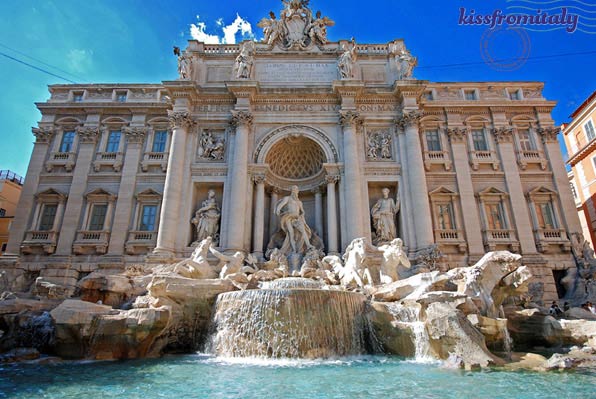
The Presepe: A beloved Italian Christmas tradition blending faith, family, artistry, and centuries-old craftsmanship
The Presepe is the traditional Italian Nativity Scene — but there's more to it than you might expect! Christmas in Italy, like many other aspects of Italian culture, is rich with tradition. One of the most loved holiday rituals for Italian families is the Presepe, or Nativity scene.
A Presepe — sometimes also called Presepio (both terms are correct!) — may seem like a simple festive decoration, but in Italy it is an art form, a family heirloom, and a cultural treasure that carries centuries of history and craftsmanship.
The Presepe Family Tradition
In Italy, December 8th, the Feast of the Immaculate Conception, marks the beginning of one of the most beloved Christmas traditions: setting up the nativity scene. This special moment becomes a time of joy, creativity, and togetherness, involving the whole family in a ritual that connects generations and fills homes with the spirit of Christmas.
Dusty boxes are brought down from the attic or the basement, and precious treasures emerge: papier-mâché or wooden figures, tiny handcrafted houses, or even simple plastic figurines — each carrying its own history and memories, passed down from generation to generation. Many families add one new piece each year, a tradition believed to bring good luck.

A large blue sheet dotted with shining stars becomes the sky. The grotto takes shape with carefully crafted wood or cardboard, while real moss — gathered in the days before, especially by children — transforms the scene into a lush landscape. Lights that simulate day and night add a touch of magic.
The whole family gathers around the Presepe to place the figures, each with a meaningful role:
- Mary and Joseph by the manger
- The ox and the donkey warming the grotto
- The angel watching from above
- Shepherds rushing in amazement
- And of course, countless villagers going about their daily lives
But the nativity scene in Italy rarely stops at the grotto. An entire miniature Bethlehem comes to life, often complete with rivers made of tinfoil, working watermills, tiny lanterns, and miniature markets. There’s the baker at the oven, the fisherman by the stream, and artisans of all kinds — the butcher, the carpenter, the blacksmith. Some modern Presepi even include funny additions like pizza makers, musicians, or famous local celebrities (a very Italian twist!).
The most important piece is the empty crib in the manger. It stays empty until midnight on Christmas Eve, waiting for the arrival of Baby Jesus, who completes the scene and fills it with magic and spirituality.
After Christmas, the story continues with the Journey of the Magi. Present from the beginning but placed far away, they move closer day by day, reaching the grotto on January 6th, the Epiphany. Their arrival marks the last chapter of the nativity story and the end of the Italian Christmas season, which traditionally lasts longer than in many other countries.

History of the Presepe
The tradition of Nativity Scenes dates back to the 13th century. St. Francis of Assisi is credited with popularizing the Presepe when, in 1223, he recreated the nativity in a cave in Greccio using real animals and local villagers. His living nativity scene was meant to make the Gospel story more accessible and emotional — and it worked. Reports of miracles and healings spread, and the custom soon became a beloved Christmas tradition throughout Italy and Europe.
By the Renaissance and Baroque periods, aristocratic families and churches began commissioning elaborate nativity scenes, transforming them into masterpieces of art. Some noble families in Southern Italy competed to create the most spectacular Presepe, complete with silk robes, golden accessories, and detailed landscapes.
The Neapolitan Presepe and Via San Gregorio Armeno
The Neapolitan Presepe deserves its own chapter. Born in 18th-century Naples, this style of nativity scene is famous worldwide for its extraordinary craftsmanship, humor, and theatricality. Far beyond a sacred representation, it is a vibrant artistic expression that blends the Nativity story with scenes of everyday Neapolitan life — market vendors, fishermen repairing nets, ladies hanging laundry, musicians playing mandolins, and even political figures or pop-culture icons.
At the heart of this cherished tradition lies Via San Gregorio Armeno, Naples’ iconic "street of nativity scenes," where artisans meticulously craft figures from wood, terracotta, or hand-painted porcelain. These workshops produce nativity pieces ranging from tiny miniatures to life-size statues, with some valued at thousands of euros. Visitors can watch artisans sculpt and paint in real time — a fascinating glimpse into a craft passed down for generations.
Find out more about Via San Gregorio Armeno, a.k.a. Via dei Presepi, in our dedicated article.
Where to See Presepi in Italy
Wherever you are in Italy — from big cities like Rome, Florence, and Milan to small villages in the countryside — you’ll find countless local Presepi set up in churches, piazzas, monasteries, and even caves. Many towns organize Presepi exhibitions or living nativity scenes, where locals reenact the Nativity with costumes, animals, torches, and music.
And if you're lucky, an Italian family might invite you into their home to admire their personal Presepe, lovingly built and expanded over years — and share a toast or a slice of Panettone or Pandoro together.
The Christmas Season in Italy
Christmas in Italy looks different depending on where you are — from lively streets in Naples to quiet winter evenings in historic towns. If you’re planning a trip or simply curious to see how the season unfolds across the country, explore our full guide to Christmas in Italy, with traditions, food, and inspiration on where to go.












